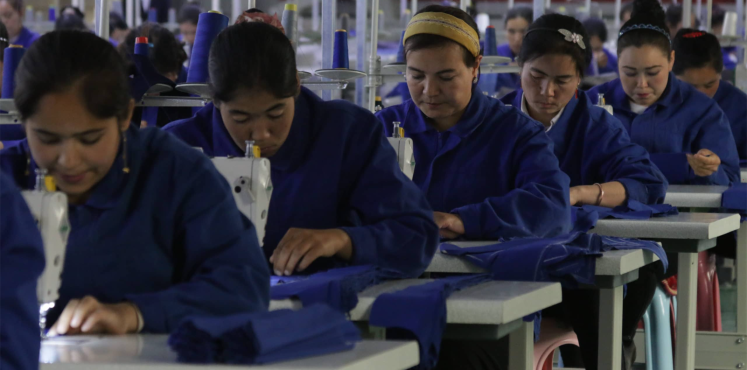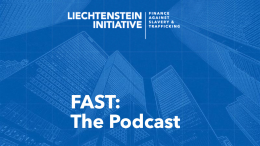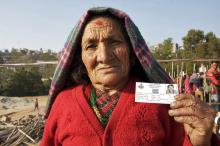The garments and apparel sector accounts for roughly 2 per cent of global GDP. It employs approximately 60 to 70 million people, two thirds to three quarters of whom are women. Garment production can drive growth, industrialization and poverty-reduction (including for women), especially in countries where backward linkages can be fostered into raw materials and textile production. Yet competition for foreign investment can leave garment sector workers vulnerable to exploitation. Production moves to capture marginal gains created by changing trade, investment and labour migration rules. Labour cost and ‘flexibility’ are key to the model.
Global buyers, typically headquartered in the US, Europe or Japan, have the widest margins and the greatest power in the value chain. They determine who produces what, where and at what price. 97 per cent of profits for the whole fashion industry are earned by just twenty companies, most of them in the luxury segment. Beneath them, the value chain is highly fragmented and disarticulated. Producers operate on the narrowest margins and carry most of the risk. Supply chain outsourcing and fragmentation has promoted efficiency, but impedes traceability and accountability, inadvertently fostering exploitative purchasing practices. These include: contract terms that are vague on price and financial implications of delays; unilateral changes on order specifications; unrealistic order completion times and unpredictable placement of orders; pricing arrangements that treat labour cost as a residue, not a necessary input; and late payment.
These buying and management practices reward contractor responsiveness and labour cost reductions. Suppliers survive by managing capital and their workforce in ways that allow them to rapidly increase and reduce labour supply to respond to buyer demand, while maintaining low prices. That translates to a highly casualized and atomized workforce, often working from home, under informal or no contractual arrangements, with zero-hours contracts or piece rate payment systems. Workers are frequently recruited through brokers and intermediaries who demand fees from workers for placing them in work. Unionization and collective organization are often absent. Unauthorized subcontracting by suppliers is ubiquitous. So too is underpayment and wage theft. One estimate put underpayments in the Chinese apparel sector at around USD 275 to 300 million per month.
Jurisdictions compete for investment and export contracts by promising “low business costs” – often a cipher for lax enforcement of labour protections and standards. Governments refrain from enforcing protections and outsource responsibility for enforcement to business and private supply chain governance initiatives. Yet in many places audits are easily gamed, and worker grievance and support mechanisms are poorly adapted to the reality of casualized, atomized workforces. Suppliers are left to choose between the norms promoted, weakly, by the state, and the institutional demands of their customers – especially their demands for low price and fast turnaround.
We explored how these dynamics play out in four different contexts: Leicester in the UK – a traditional textile hub that has recently re-emerged as a leader, in the context of ultra-fast fashion; Bangladesh; India; and Ethiopia. In each place, the institutional dynamics of the value chain work to encourage labour exploitation. In some of these places, there is a ‘captive’ population – often refugees, migrants and those socially marginalized by language, gender or caste – with few outside options, vulnerable to exploitation. In each place, there are also signs that a lax approach to sustainability imposes costs not only on the worker population, but also on the broader community – including public health costs, lost tax revenue and environmental costs associated with unsustainable production practices.
In the UK, our research focuses on the allegations of labour exploitation in the Leicester supply chain of boohoo, a large ultra-fast fashion firm. A recent review by Alison Levitt QC suggests that allegations of unacceptable working conditions and underpayment of contractors by suppliers are substantially true. We explore the institutional setting, vulnerabilities and supply chain practices that have contributed to this system, and consider what a more developmental approach to supply chain upgrading might look like.
Bangladesh is the world’s second largest garment exporter after China. Garment production accounts for roughly 20 per cent of its GDP, and employs around 4.5 million people. It has been a powerful driver of development, especially for women, in recent decades. But it has also exposed millions of children to child labour in the production of leather and textiles. The Rana Plaza disaster of April 2013, in which 1,138 people were killed in the collapse of a building housing several garment factories supplying global brands, led to three different supply chain governance initiatives:
- A government-ILO led National Tripartite Plan of Action on Fire Safety and Structural Integrity;
- The European company-led Accord on Fire and Building Safety in Bangladesh (which was legally binding and included union representatives); and
- The US company led Alliance for Bangladesh Worker Safety (not binding, no unions).
At the inter-governmental level, Bangladesh, the EU, US, Canada and ILO also agreed a Bangladesh Sustainability Compact together to commit to strengthening respect for labour rights, building and workplace safety, and responsible business conduct. This created a strategic coordination framework, backed up by the threat of loss of trade preferences.
Overall, these initiatives appear to have significantly enhanced worker safety. But their scope was limited, both in terms of their reach into unauthorized factories, and into issues beyond worker safety – such as worker voice, sexual harassment, involuntary work and wage theft. Moreover, a World Bank study suggests that because buyers would not pay for the remediation and renovation of factories found to be unsafe, suppliers passed the costs of doing so on to workers – specifically, to female workers. That suggests that efforts that aim to address working conditions may generate trade-offs by suppliers on wages. A more holistic approach to workers’ economic agency may be needed that grapples with broader labour rights questions, such as unionization.
In India, a large part of production is through informal, home-based work, where child labour may be prevalent. In recent years there has been particular international mobilization around forced labour in the Tirupur area, the location of the majority of India’s spinning units and knitted production. This has focused on the sumangali (‘married woman’) recruitment scheme – an indentured servitude scheme recruiting poor, unmarried, lower-caste, rural teenage girls, with the promise of earning enough money for a dowry – and thus the respectability of becoming a ‘married woman’. In reality, workers often received less than promised, only at the end of a three-year term of service, while being subjected to coercion and involuntary work during that period.
Local and foreign civil society groups mobilized in the late 2000s to organize public relations, judicial and divestment campaigns, and stood up a local multi-stakeholder initiative. Local suppliers now argue the scheme is defunct. There are however signs that some of the exploitative practices persist. A new approach, pioneered by the Freedom Fund, combining elements of disruption, transformation and empowerment, may be having more sustained success: in the 400 villages participating in its regional programme between 2015 and 2018, the prevalence of households experiencing bonded labour fell on average from 56 per cent to just 11 per cent. That represents more than 63,000 fewer individuals in bonded labour.
Since the 1990s, Ethiopia has sought to diversify its agriculture-focused economy, through a labour-intensive, export-led industrialization model, based on East Asian models. Textile and garment manufacturing is seen as key to this process, fostering backward linkages to cotton production, while harnessing preferential trade access to the EU and US to deliver rents that can be used to invest in infrastructure, basic services and social programming. The government’s industrial policy has, since 2008, focused on attracting foreign investment in the industry, through favourable investment and tax regimes, low cost electricity, and access to land and government-funded industrial parks. Ethiopia also has the lowest textile industry wage in the world, no statutory minimum wage, and low union density. The strategy was significantly supported by development partners including DfID, GIZ and IFC, as well as domestic banks.
The result has been 51 per cent growth in the industry between 2013 and 2018, and 45,000 new jobs. Yet wages are so low that they may push workers into debt, once living expenses are factored in. This, combined with poor management practices, seems to lead both to low total-factor productivity, and to high workforce turnover, as workers leave to start their own informal businesses. Workers may experience involuntary work, or coercion – but do not seem to experience both. This is not a ‘captive’ workforce. Workers seem to retain the ability to exercise outside options in the labour market. Strategic coordination of stakeholders, worker inclusion, exit options, and the role of the state seem to be key to the relationship between modern slavery risks and development in the garment and apparel sector.
The garments value chain works the way it does because states have chosen to take a hands-off approach, favouring returns to capital over returns to labour. That is a choice; they could equally now choose to take a more interventionist path, guiding the global garment sector towards greater sustainability and resilience. This could lead to longer-term productivity gains, as more stable supplier relationships allow suppliers to save more, and to invest more in the well-being and training of their own workforce. The study canvasses options from Australia (Fair Work Ombudsperson) and the US (Fair Labor Standards Act), and points to a role for development actors in system transformation involving:
- Creating incentives for improved supply chain transparency and information-sharing;
- Modelling adjustments to trade and investment regimes for greater supply chain resilience;
- Identifying and financing investments to promote resilience and sustainability upgrading;
- Facilitating local market arrangements that foster longer-term planning and sustainability while protecting economic agency (such as worker and supplier cooperatives, framework agreements or accords between government and industry); and
- Engaging global unions to develop and effectively implement global framework agreements.
Suggested citation: "Garments and Apparel," United Nations University, UNU-CPR, 2024-05-01, https://unu.edu/cpr/article/garments-and-apparel.




